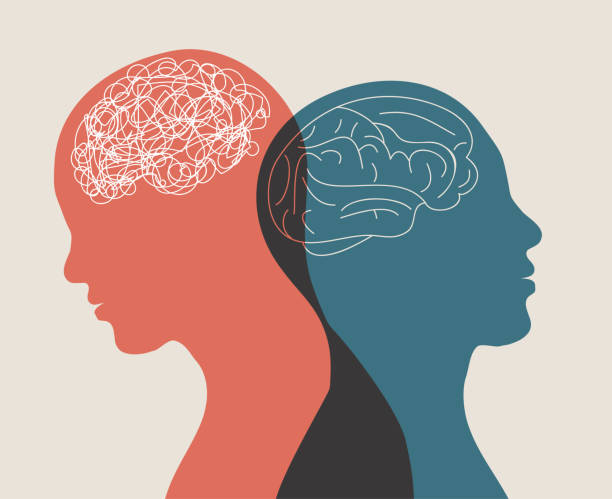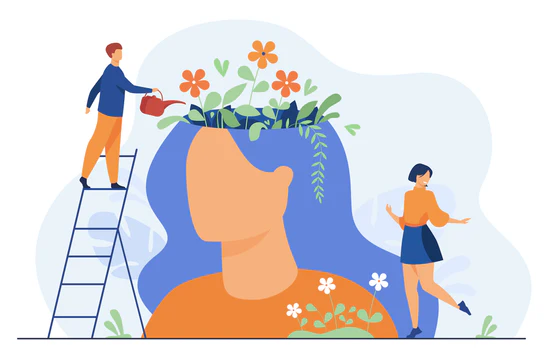Introduction
In conversations about mental health and everyday relationships, people often default to problem-solving. We want to fix what seems broken, offer solutions, and give advice. Yet sometimes, what others need most is not a solution but a listener. Empathy—the ability to understand and share the feelings of another—has been repeatedly shown to be one of the most powerful tools for connection, healing, and resilience (Decety & Cowell, 2014).
Read More: AI Companions
What Is Empathy?
Empathy is often confused with sympathy, but the two differ. Sympathy involves feeling pity or sorrow for another’s misfortune. Empathy, by contrast, is the ability to step into another’s shoes, understand their emotions, and respond with sensitivity (Rogers, 1957).
Scholars describe empathy in three dimensions (Davis, 1983):
- Cognitive empathy – understanding another’s perspective.
- Affective empathy – sharing another’s emotional state.
- Compassionate empathy – responding with care and support.
These dimensions work together, enabling not only understanding but also meaningful human connection.

The Neuroscience of Empathy
Neuroscience has revealed that empathy is deeply rooted in our biology. Mirror neurons, first discovered in primates, activate both when an individual performs an action and when observing another perform the same action (Rizzolatti & Craighero, 2004). This neural mirroring underpins our ability to resonate with others’ feelings.

Brain imaging studies further show that empathy involves the anterior insula and anterior cingulate cortex—regions linked with emotional awareness and pain perception (Singer et al., 2004). These findings underscore that empathy is not merely a moral choice but a hardwired human capacity.
Listening vs. Fixing: Why the Distinction Matters
When someone shares their struggles, the instinct to fix often overshadows the need to listen. While advice-giving may seem helpful, it can unintentionally dismiss the speaker’s emotions, leaving them unheard. Research shows that individuals who feel truly listened to report lower stress levels and improved well-being (Weger, Castle, & Emmett, 2010).

Carl Rogers, the father of person-centered therapy, emphasized “unconditional positive regard” and empathetic listening as the cornerstone of therapeutic change (Rogers, 1957). In his model, healing comes not from solutions imposed by the therapist but from the client’s own growth, facilitated by empathetic presence.
Six Transformative Reasons Empathetic
Empathy involves listening and some of the reasons why it is the superior choice over fixing problems include:
1. Listening Validates Emotions
Validation is a key psychological need. When people feel heard, they experience affirmation of their emotions, which reduces feelings of isolation (Linehan, 1993). A simple acknowledgment such as “That sounds really hard” can have a more powerful impact than prescriptive advice.
2. Listening Builds Trust and Connection
Empathy strengthens bonds by signaling safety and understanding. Gottman’s (2011) research on relationships shows that emotional attunement—responding to a partner’s bids for connection—predicts long-term relational stability. Listening fosters this attunement, while fixing may create distance.
3. Listening Reduces Stress and Anxiety
Studies demonstrate that supportive listening lowers cortisol levels and physiological stress responses (Liu, Gillen, & Yeung, 2015). This effect is particularly important in school and workplace environments where stress is pervasive.
4. Listening Encourages Self-Discovery
When individuals are listened to without interruption, they often arrive at their own solutions. This process enhances autonomy and problem-solving skills (Rogers, 1961). Fixing, by contrast, may create dependency or disempowerment.
5. Listening Enhances Empathy in the Listener
Engaging in deep listening strengthens the listener’s own empathetic capacity. Research shows that perspective-taking exercises increase prosocial behavior and reduce prejudice (Batson et al., 1997).
6. Listening Promotes Collective Healing
In community contexts, collective listening—such as support groups—fosters solidarity and resilience. After crises, communal spaces for storytelling are essential for recovery (Herman, 1992).
Barriers to Empathy
Despite its benefits, empathy can be challenging. Barriers include:
- Time pressures – fast-paced environments discourage slow, intentional listening.
- Emotional fatigue – caregivers and professionals may experience compassion fatigue (Figley, 2002).
- Cultural norms – some societies discourage open emotional expression, making empathetic responses less common.
- Personal discomfort – many avoid listening deeply because others’ emotions trigger their own anxieties.
Recognizing these barriers helps individuals and organizations intentionally create conditions for empathy.
Cultivating Empathy
- Practice active listening – paraphrase, ask open-ended questions, and withhold judgment.
- Engage in perspective-taking – imagine how the situation feels for the other person.
- Limit distractions – put away phones and maintain eye contact.
- Develop self-awareness – regulate your own emotions to avoid defensive responses.
- Model empathy in leadership – teachers, parents, and managers can normalize listening by example.
Training programs, such as empathy workshops and mindfulness-based interventions, have shown success in increasing empathetic skills (Jazaieri et al., 2013).
Empathy as a Social Imperative
Empathy is not just an interpersonal tool but a social force. In an era of polarization, practicing empathy bridges divides, reduces stigma, and enhances community well-being. Social movements that prioritize listening to marginalized voices demonstrate how empathy can transform structures, not just individuals.
Conclusion
Listening is more than passive silence—it is an active, intentional act of empathy. While fixing may be well-meaning, it often undermines the deeper need for validation and connection. Neuroscience, psychology, and lived experience all affirm that listening transforms individuals and communities alike.
In the context of mental health, empathy is not optional—it is essential. By listening more and fixing less, we create spaces where healing, trust, and resilience can flourish.
References
Batson, C. D., Early, S., & Salvarani, G. (1997). Perspective taking: Imagining how another feels versus imagining how you would feel. Personality and Social Psychology Bulletin, 23(7), 751–758. https://doi.org/10.1177/0146167297237008
Davis, M. H. (1983). Measuring individual differences in empathy: Evidence for a multidimensional approach. Journal of Personality and Social Psychology, 44(1), 113–126. https://doi.org/10.1037/0022-3514.44.1.113
Decety, J., & Cowell, J. M. (2014). The complex relation between morality and empathy. Trends in Cognitive Sciences, 18(7), 337–339. https://doi.org/10.1016/j.tics.2014.04.008
Figley, C. R. (2002). Compassion fatigue: Psychotherapists’ chronic lack of self-care. Journal of Clinical Psychology, 58(11), 1433–1441. https://doi.org/10.1002/jclp.10090
Gottman, J. (2011). The science of trust: Emotional attunement for couples. Norton.
Herman, J. L. (1992). Trauma and recovery: The aftermath of violence—from domestic abuse to political terror. Basic Books.
Jazaieri, H., McGonigal, K., Jinpa, T., Doty, J. R., Gross, J. J., & Goldin, P. R. (2013). A randomized controlled trial of compassion cultivation training: Effects on mindfulness, affect, and emotion regulation. Motivation and Emotion, 38(1), 23–35. https://doi.org/10.1007/s11031-013-9368-z
Linehan, M. M. (1993). Cognitive-behavioral treatment of borderline personality disorder. Guilford Press.
Liu, C., Gillen, M., & Yeung, A. (2015). The association between supportive listening and stress reduction in adults. Journal of Health Psychology, 20(2), 227–235. https://doi.org/10.1177/1359105313509734
Norcross, J. C., & Lambert, M. J. (2011). Psychotherapy relationships that work II. Psychotherapy, 48(1), 4–8. https://doi.org/10.1037/a0022180
Rizzolatti, G., & Craighero, L. (2004). The mirror-neuron system. Annual Review of Neuroscience, 27, 169–192. https://doi.org/10.1146/annurev.neuro.27.070203.144230
Rogers, C. R. (1957). The necessary and sufficient conditions of therapeutic personality change. Journal of Consulting Psychology, 21(2), 95–103. https://doi.org/10.1037/h0045357
Rogers, C. R. (1961). On becoming a person: A therapist’s view of psychotherapy. Houghton Mifflin.
Schonert-Reichl, K. A. (2017). Social and emotional learning and teachers. Future of Children, 27(1), 137–155. https://doi.org/10.1353/foc.2017.0007
Singer, T., Seymour, B., O’Doherty, J. P., Stephan, K. E., Dolan, R. J., & Frith, C. D. (2004). Empathy for pain involves the affective but not sensory components of pain. Science, 303(5661), 1157–1162. https://doi.org/10.1126/science.1093535
Weger, H., Castle, G. R., & Emmett, M. C. (2010). Active empathic listening scale (AELS): A multidimensional approach to measure listener empathy. International Journal of Listening, 24(2), 67–79. https://doi.org/10.1080/10904011003751632
Subscribe to PsychUniverse
Get the latest updates and insights.
Join 3,027 other subscribers!
Niwlikar, B. A. (2025, October 7). 6 Important Reasons Empathy Matters More Than Fixing. PsychUniverse. https://psychuniverse.com/empathy-matters/



